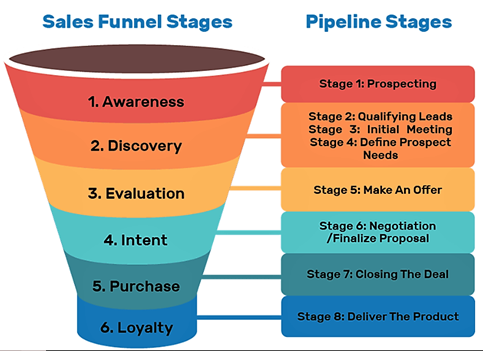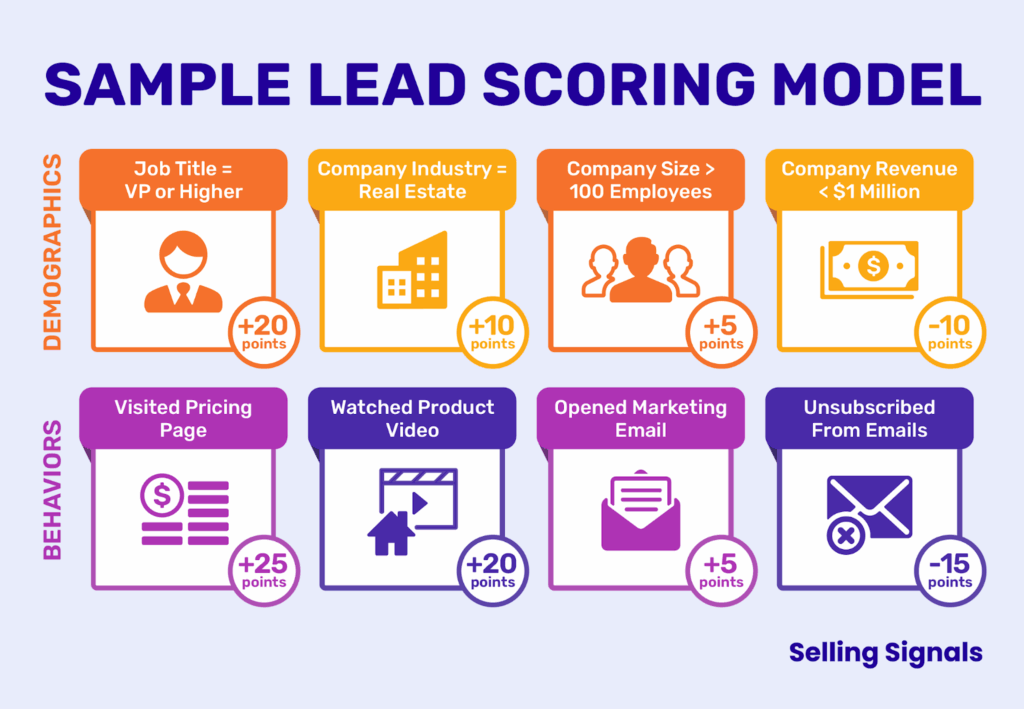How to Optimize Your Sales Funnel for Maximum Conversion
A sales funnel represents the path buyers take from initial awareness to final purchase. Each stage (awareness, consideration, and decision) requires tailored strategies to guide prospects forward. Yet many organizations struggle with gaps and inefficiencies that cause leads to drop off before converting.
Sales funnel optimization reduces these barriers and ensures every stage drives maximum engagement. By analyzing data, aligning marketing and sales, and leveraging technology, businesses can improve conversion rates and generate higher ROI.
Quick Takeaways
- Sales funnel optimization reduces friction and increases conversion rates.
- Data analysis identifies weak points in the funnel.
- Technology and automation improve lead nurturing and tracking.
- Continuous refinement keeps the funnel aligned with buyer behavior.
Understanding the Sales Funnel
Every funnel begins with awareness, where potential buyers first encounter a brand. From there, they progress into the consideration stage, evaluating options and seeking proof of value. Finally, at the decision stage, prospects assess whether to purchase.

Optimization requires a clear view of these stages and how buyers move between them. Each audience segment may take a different path, some influenced by social channels, others by direct sales outreach. Mapping these journeys ensures organizations understand where to focus efforts to maximize conversion.
Identifying Bottlenecks and Drop-Off Points
Funnels often fail not from lack of interest but from friction within the buyer journey. Analytics reveal where prospects disengage, making it possible to address those weak points.
Common bottlenecks include:
- Top of funnel: Inadequate lead qualification floods sales with unqualified prospects.
- Middle of funnel: Weak nurturing campaigns fail to maintain interest, leading to stalled opportunities.
- Bottom of funnel: Poor or inconsistent sales follow-up prevents prospects from closing.
By tracking metrics like bounce rate, email open rates, demo attendance, and proposal-to-close ratios, organizations gain clarity on where conversions are lost. Each drop-off represents an opportunity for improvement.
Data-Driven Insights for Funnel Improvement
Analytics and CRM data guide funnel optimization by identifying which actions move buyers forward. Instead of relying on intuition, organizations can use evidence to refine strategies.
Lead Scoring Models
Lead scoring assigns value to actions such as downloading content, attending webinars, or requesting demos. By ranking leads based on engagement and fit, sales teams can focus their time on prospects most likely to convert.

This prioritization improves efficiency and reduces wasted effort on low-quality leads. Over time, refining the scoring model ensures it aligns closely with actual buyer behavior and outcomes.
Attribution Insights
Multi-touch attribution clarifies how different channels influence decisions. A prospect may read a blog, open several emails, and attend an event before speaking with sales.
Understanding this sequence helps allocate resources effectively and prevents over-reliance on one channel. It also gives marketing and sales a shared view of how their efforts collectively drive conversions.
Segment-Specific Campaigns
Different buyer personas respond to different tactics, making segmentation critical for funnel success. By grouping leads by industry, company size, or behavior, businesses can design campaigns that feel relevant and timely.
Tailored messaging increases engagement and moves prospects through the funnel faster. Over time, segmentation also reveals which buyer groups deliver the highest ROI, guiding long-term strategy.
Aligning Marketing and Sales for Funnel Success
A well-optimized funnel depends on strong alignment between marketing and sales. Marketing generates awareness and nurtures leads, while sales converts opportunities into revenue. When these teams operate in silos, leads often fall through the cracks.
Shared definitions of lead stages, agreed-upon qualification criteria, and consistent handoff processes create a seamless transition between marketing and sales. Joint reporting ensures both teams remain accountable for performance and outcomes. Alignment not only reduces friction but also improves buyer experience, as prospects encounter consistent messaging throughout their journey.
Leveraging Technology for Sales Funnel Optimization
Technology enables organizations to streamline the funnel and increase conversion efficiency.
Key tools and benefits include:
- Marketing automation: Delivers targeted nurture sequences and tracks engagement across campaigns. These tools save time while ensuring leads receive consistent, personalized communication.
- CRM systems: Provide real-time visibility into buyer activity, ensuring leads are managed consistently. They also give sales and marketing a shared view of progress through the funnel.
- AI-driven analytics: Forecast lead quality and prioritize opportunities most likely to close. This allows teams to focus resources where they will have the greatest impact.
Together, these tools eliminate manual errors, accelerate reporting, and provide the insights needed to continually refine funnel performance.
Nurturing Leads Through Personalization
Generic campaigns often fail to capture buyer interest. Personalization ensures prospects receive relevant content and experiences at each stage of the funnel.
Examples include:
- Delivering stage-specific resources such as case studies during consideration and ROI calculators at decision.
- Creating email sequences that reflect individual buyer behavior, such as revisiting a pricing page.
- Running retargeting campaigns that surface content based on prior website activity.
Personalized experiences shorten sales cycles, build trust, and increase the likelihood of conversion. By aligning messaging with buyer intent, organizations keep prospects engaged until they are ready to purchase.
Measuring Success and ROI in Sales Funnel Optimization
The effectiveness of funnel optimization is measured by its impact on revenue. Tracking the right metrics ensures progress is visible and sustainable.
Key measures include lead-to-opportunity conversion rates, deal velocity, customer acquisition cost, and customer lifetime value. These indicators provide a full picture of how well the funnel generates qualified leads and closes deals.
Dashboards that consolidate these metrics give leaders a real-time view of funnel performance. They also demonstrate marketing’s direct contribution to revenue, building confidence among executives and stakeholders. By making ROI transparent, organizations can justify continued investment in optimization efforts.
Optimize Your Sales Funnel with Televerde
Sales funnel optimization is an ongoing process of improvement. By identifying bottlenecks, applying data-driven insights, aligning marketing and sales, and leveraging personalization and technology, organizations can reduce friction and maximize conversion rates.
Ready to optimize your sales funnel? Let’s build a strategy that delivers results. Contact us to learn more.


